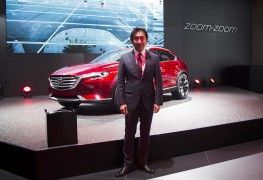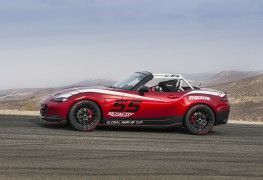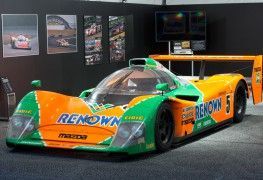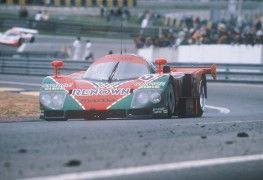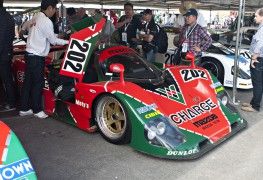The car mixed in a single recipe all the necessary ingredients of a typical British sports car: lightness, a big engine taken from a saloon, a rear-wheel drive, dynamic driving feel, and a purchase price that, at the time, was not a big deterrent either.
It would not be alone in the market. Products like the MG B or the Triumph Spitfire would be introduced in the same year 1962 to compete in the same market segment, although the Elan was by far the best.
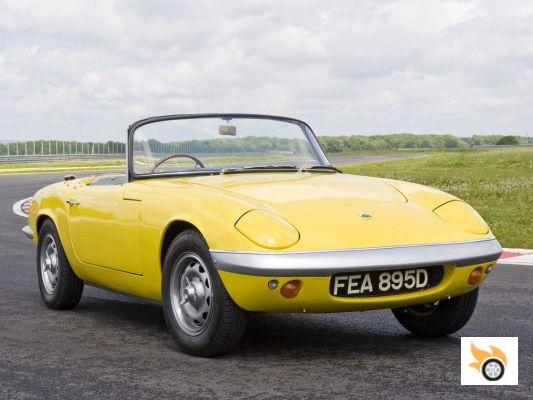
Elan is the "spiritual father" of the Mazda Miata
In a naturally "happy" time, American consumers began to pull the British roadster bandwagon, with an unusual demand that would also be reflected in the appetite for other less British products such as the Alfa Romeo Spider. The fact is that there was a prodigious decade in this sense until the outbreak of the oil crisis.
The necessary changes in terms of emissions and consumption brought about by the new emissions and safety regulations would begin to transform cars in a negative way, until practically destroying the market niche at the beginning of the eighties.
The seed of the project
It was in this context that MANA, the acronym for Mazda North America, was created. Mazda had created this American division, with research and development capabilities to be able to evaluate products and better understand the tastes and needs of what was then the largest car market on the planet, the United States, whose strategic importance to Hiroshima was vital.
As an unofficial outside advisor was Bob Hall, a motoring journalist with a passion for cars. Hall was genuinely depressed by the fall from grace of British sports cars. As luck would have it, Hall had the opportunity to sit at a round table with Kenichi Yamamoto (we gave you a full profile of him here) in 1979. At the end of the talk about new Mazda launches, Yamamoto asked him what kind of product he'd like to see an American like him launch from Mazda (Toyo Kogyo was still around at the time). Hall didn't hesitate: A lightweight sports car more economical than the RX7 that would set the brand apart from all the other Japanese brands.
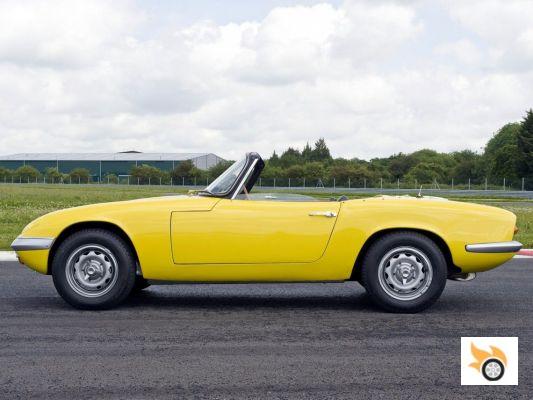
Hall and Fukuda missed the days of classic British roadsters.
Yamamoto, who was another car enthusiast, as you read the other day, welcomed the proposal. After all, the idea of differentiating Mazda from the rest of Japan by doing things differently was not new to him.
Hall traveled years later, in 1982, to Pebble Beach. There he met with MANA's director, Shigenori Fukuda. Fukuda was focused on evaluating the second generation of the sports car and its introduction to the U.S. market. Hall asked Fukuda what kind of car he would like to work on once the new RX-7 project was completed. Fukuda was clear: A lightweight, affordable sports car.
Hall and Fukuda, in perfect harmony, began exchanging views as Hall excitedly tested the RX-7. By the end of the drive, which legend has it was crowned with a speeding ticket for Hall, the two had established a relationship that would make Bob one of the first Americans to be hired by Mazda to work at MANA, as the company's U.S. communications manager, but also as a catalyst and source of inspiration for new projects.
From the association of these two people would come the internal MANA idea of investigating the possibilities of creating a lightweight and economical sports car. Thus MANA created a working memorandum entitled "What is a sports car for an American". The lengthy document outlined a number of basic but important precepts. The most relevant was to read that "a sports car has to have certain performance, but it is more important that it is fun to drive. A budget sports car doesn't have to do 0.81 G in lateral acceleration or 0-60 in eight and a half seconds. It has to feel faster than it is without being fast in absolute terms".
The text added that "the appearance, the first impression, are obvious things to make a sports car, but there are also a couple of intangibles beyond the image, related to the character of the car and its personality to make the car a cult object, with loyal enthusiasts, as happened with the Lotus Elan or the MG".
A number of key characteristics were also derived from this text. The memo specified that the most successful sports cars in the United States had always been convertibles. And then there was the issue of price. The first generation of affordable Japanese sports cars (Z, RX7 and company) had worked because they were good, beautiful and cheap, but the second generation (300ZX Z31, RX-7, etc.) were betting on moving up a step in the market, leaving room for affordable and basic sports cars.
Having received the memo, one of Mazda's most respected development engineers, Takaharu Kobayakawa, arranged for his friend and then CEO Kenichi Yamamoto to take a ride in the mountains around Hakone in a Triumph Spitfire. Yamamoto, already a sportscar enthusiast himself, came back frankly excited by the idea of creating a lightweight sportscar, or LWS.
A ride in a Triumph Spitfire convinced Yamamoto to support the project.
Squaring the memo with the test, Yamamoto came to the conclusion that such a product was not only interesting to drive, but also worthy of development, so he commissioned his R&D advanced idea development group (working under the name Off-Line Go Go, or OGG) to create a concept of such a car. Thus was born the project that would give birth to the Miata seven years later, no less. And yes, thanks to the final decision of Yamamoto, to whom Mazda, and the automotive world, owes many unique creations.
Development of the LWS
The first question OGG had to solve was to conceptualize what kind of car they wanted to make. It was clear that it had to be a lightweight, economical sports car, but on the table were the options of making a front-engine front-wheel drive, a transverse mid-engine rear-wheel drive, or a traditional longitudinal front-engine rear-wheel drive car.
The project, which would receive the internal code of P729, would then be split into two "efforts", one in Japan to develop the transverse engine proposals, and another developing the front-engine, rear-wheel drive project by MANA.
Above, mid-engine proposal, below, front-engine and front-wheel drive proposal, both discarded.
The first proposal to fall was the mid-engined car. The weight to maintain the required level of thermal and sound insulation was excessive, while both the MR2 and the Pontiac Fiero had just occupied that niche market, so it was felt that the product did not offer anything new to the market, although aesthetically it was perhaps the most innovative proposal.
Between the front-wheel drive car and the rear-wheel drive car, the decision came from a presentation by MANA, which explained the advantages in the driving feel of a rear-wheel drive and front-engine sports car, which served to convince Mazda to go down the road less traveled in that sense. The front-engine, front-wheel drive car would have been cheaper and easier to produce (the Lotus Elan M100 would have gone that way) but it would not have achieved its iconic positioning for sure.
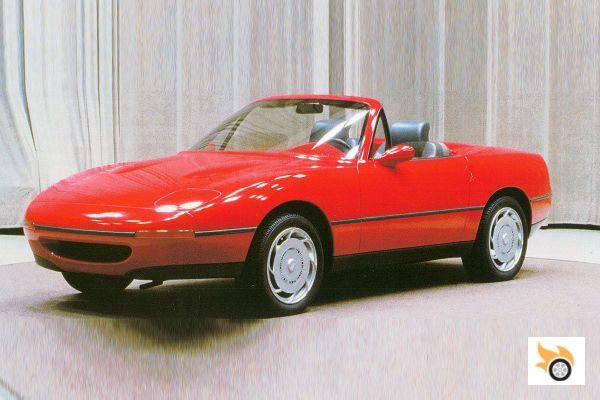
Prototype Duo 101, finally chosen as the basis of the car design
Thus, the prototype in mock-up form presented by MANA to the management, called the Duo 101, came to life. In 1984, Mazda commissioned the production of a rolling prototype from the British company IAD to carry out a series of dynamic tests of the product and evaluate its potential on the same British roads that had seen the birth of the Lotus Elan, the spiritual germ, after all, of the Miata.
To build the working prototype, IAD created an Elan-like "backbone" chassis, fitted it with a 1.4-litre engine and the powertrain of a Familia, as well as the rear suspension system of an RX-7 and the front suspension of a Mazda 929. The body was to be built in fibreglass. All in all, looking at this list of specifications (fiber body, steel chassis, street sedan components) the car could very well pass for a modern Elan.
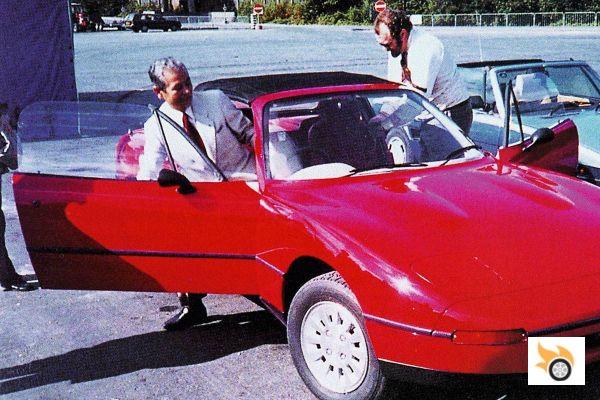
V705 functional prototype in testing
The prototype, christened V705, would undergo a series of comparative tests with all kinds of competing products (Fiat X1/9, Toyota MR2, the RX-7 itself, the Spitfire...), in the UK and also in California, with excellent results. These tests would make the project gain momentum, although always in fits and starts. As it was not a strategic project, one only has to look at the time that elapsed between the start of its development and its commercialisation to see that it did not really have a constant development rhythm, and often found itself in deadlocks.
It was only thanks to various industrial agreements with other manufacturers and the launch of Mazda's US plant, all of which Yamamoto had achieved, that the company was able to free up enough resources to concentrate on the production of the Miata.
In 1985 the company gave the project another push with the creation of a second and third version of the design by Tom Matano and Koichi Hayashi. Matano wanted to introduce the "family face" concept to Mazda, an idea "stolen" from the German premium manufacturers. Matano advocated the idea that cars of the same brand should have a similar, but not identical, face in order to promote brand image.
The chief designer of the project, in any case, would be Shunji Tanaka, who would look for the purity of lines in the final concept, the typical Mazda brand image from that moment on, the organic and simple shapes... Everything that would mark the shape of the MX-5. "Sensitivity and modern technology" is what the car had to exude.
To get the chassis
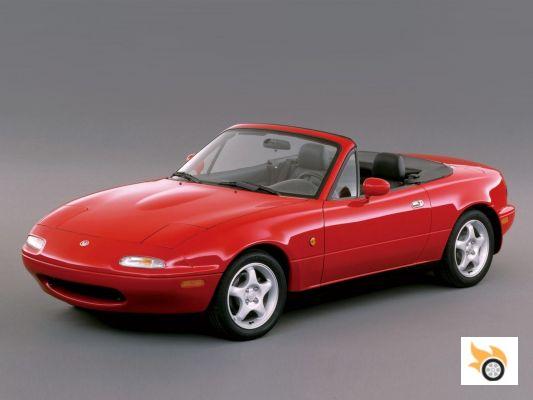
With the project defined aesthetically and conceptually, it was time to create the chassis and mechanics to support these ideas. This is where the concept of "Jinba Ittai", which refers to the synthesis of rider and horse "to feel as one", came about.
This man-machine connection and, in turn, connection with the road, would serve as the basis for parameterizing the chassis design. Captained by Toshihiko Hirai, the engineering team would be dedicated first to decipher each and every one of the details that made a car a good lightweight sports car, and then apply engineering solutions to achieve that feeling, that man-machine connection so desired.
As for the mechanical heart of the car, the option of using a Wankel engine was on the table at first, but was quickly discarded for the sake of a more economical and above all less powerful product. They wanted a complementary car to the RX range, which was simpler and less powerful, and the Wankel engines would be perceived on the one hand as something more technological (they wanted a logical car, not technical) while they would force to rethink the chassis to be able to assume the extra power and speed that the car would be able to acquire.
So, finally it was decided to start from the base of the four-cylinder double overhead camshaft Mazda 323F, and modify it to change the way of power delivery (it was an engine more torque than delivery at high revs) and adapt it to the desired characteristics in a sports car.
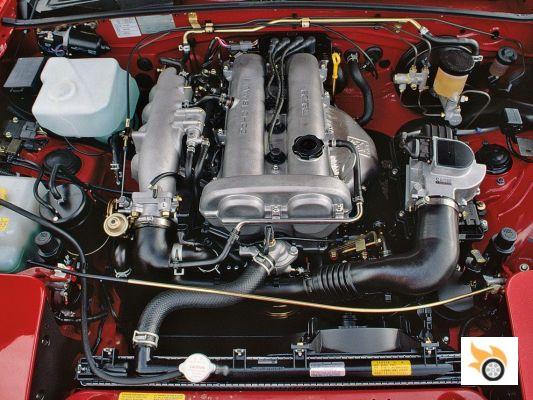
In the end, the engine, with a steel block and aluminium cylinder head, became a 1.6-litre block capable of stretching up to 7,200 revolutions per minute, something that was in line with what was desired by potential customers.
Not only technical aspects of the engine were changed, but also worked on the aesthetics, creating a rocker cover that reminded and recalls the one used in the legendary Alfa Romeo and Fiat bialbero, and why not, the TwinCam Lotus so famous. The use of separate exhaust manifolds to achieve equivalent lengths or the design of the induction system spoke, once again, of Mazda's careful engineering to detail that is not seen in other manufacturers. The accelerator pedal had almost twice the travel of a conventional Mazda, in an effort to encourage more precise control of power delivery by the driver, and a linear feel between how much the right pedal depressed and how much torque it received (a far cry from today's accelerator pedals, where a slight touch unleashes almost 70% of the torque).
The engine, in its Japanese and European specification, called the B6-ZE, produced 120 horsepower at 6,500 revs, with peak torque well up at 5,500, making it a powerplant to be used with a lot of gearbox movement. That's why the gearbox, derived from the naturally aspirated RX-7, was also taken care of in detail, although with a shortened lever travel, to make it more pleasant to work on. If you've tried a Mazda you'll know that they're the cars with the best gearbox feel on the market, but it's in this Miata where they really started to shine.
To finish off the chassis, Mazda used a rigid connection between the gearbox and rear differential by means of a side plate called PPF, which served to dispense with cardan joints, and allowed to avoid parasitic movements of the powertrain with respect to the body in acceleration and retention, achieving a better control of the vehicle's movements at the time of driving. The PPF solution would be used on all rear-wheel drive Mazda MX and RX series models from that time onwards.
The front suspension would be double overlapping triangles, while the rear suspension was also double triangles, with programmed deflection bearings in the toe-in control tie-rod, to promote a certain degree of toe-in at the rear axle in the event of hard cornering, achieving the effect of a steerable rear axle.
The weight distribution was perfect (50/50) with a very low polar moment of inertia and a high torsional and bending stiffness for the time in a convertible.
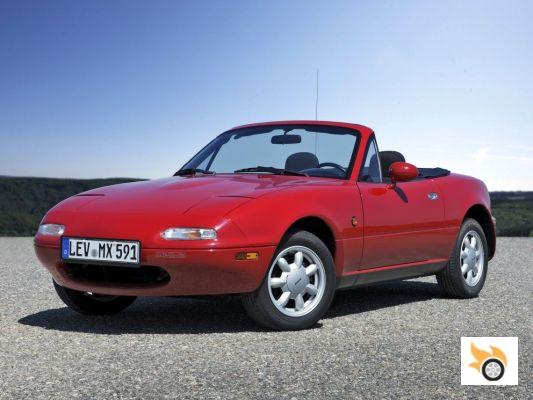
The final touch was the wheels, which replicated the Minilite wheels used on many British roadsters of the sixties, but for weight reasons they eliminated one arm, going from eight to seven.
The body, for a moment, it was considered to manufacture it in fiberglass, but it was not profitable from 3,000 units per year. Manufacturing it in aluminum gave weight advantages, but it was much more expensive, so finally it was chosen a steel one with some specific panels in aluminum to reduce the total weight, as is the case of the hood.
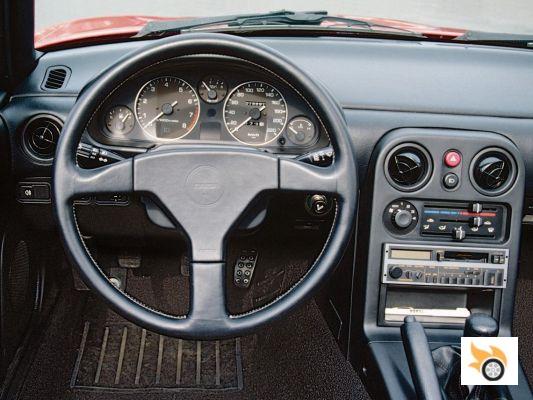
The cabin was given a retro design, but the most important thing on this front was the decision to place the driver and passenger "in the air flow". Anyone who has tested a recent generalist convertible will have noticed how, despite being unhooded, the car covers you from the airflow, and you are not "exposed", especially in cars with windbreaks between the roll-bars. Mazda didn't want to go down that road with the MX-5, and actively worked to make the first Miata a car that made you feel "the wind in your hair", much like a Lotus Elan did in its day.
The roof was designed to be easily attached and removed with one hand from the driver's seat in a matter of seconds, eliminating the need for complicated electrical mechanisms, something that still applies to the current generation of the model.
The Launch
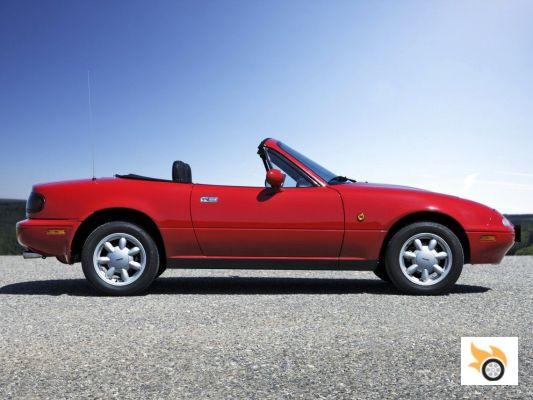
Thus, after much development work and fine-tuning, in February 1989 the Miata was presented in its favorite market: the United States, it did so at the Chicago Motor Show. It weighed less than a thousand kilos, had a 120 horsepower 1.6 engine pulling it, and its starting price was $14,000. With an inflation calculator, that would be $26,325 in today's dollars, or about £24,000. Effectively, it cost what it does now, and that was a break from anything else on the sports car market at the time. It was a cheap car by American standards.
The car blended "the taste of a classic British roadster with the reliability and price of a Japanese car". It was a magic recipe for a market that, without knowing it, was desperate for this kind of car. As Dani told you yesterday, the initial demand was brutal. Hiroshima had planned to market 40,000 units per year, with a first year with only 20,000 deliveries.
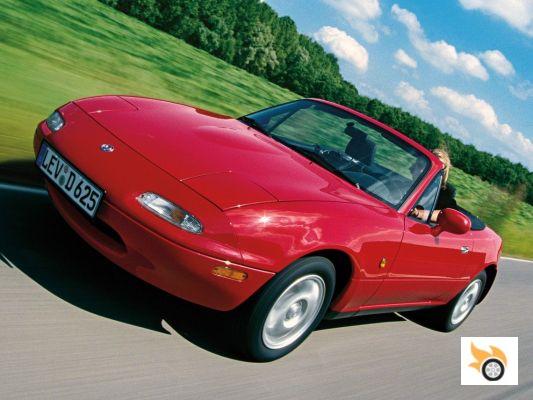
The rate of orders was 7,000 per month only in the United States, while Mazda only managed to deliver the first year just under 24,000 cars in the United States, creating a significant waiting list, which served to delay the launch of the car in Europe, which received it with open arms. In the first three years of production alone, Mazda would build a quarter of a million Miatas, proving the validity of a concept that has remained valid ever since.
It is clear that the changing tastes of the public, which has turned towards SUVs and less and less like convertibles every day has slowed the taste for this type of car, but the Miata, especially the NA, will always remain as the clear demonstration that, when a car is made by enthusiasts for enthusiasts, and meets the requirements of price, driving fun, reliability and aesthetics, the market is there to sell them.
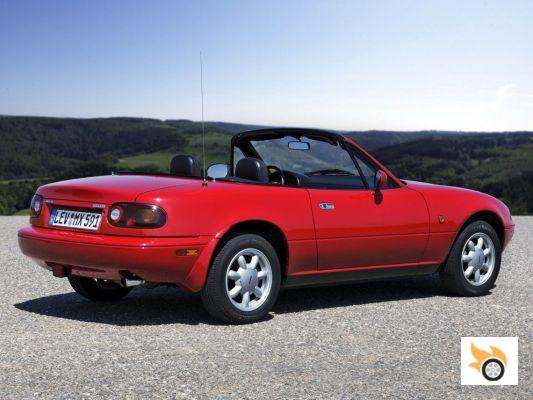
In a week's time we will continue with the story of the second generation, the NB.
A tribute to Mazda and its sporting and technological heritage